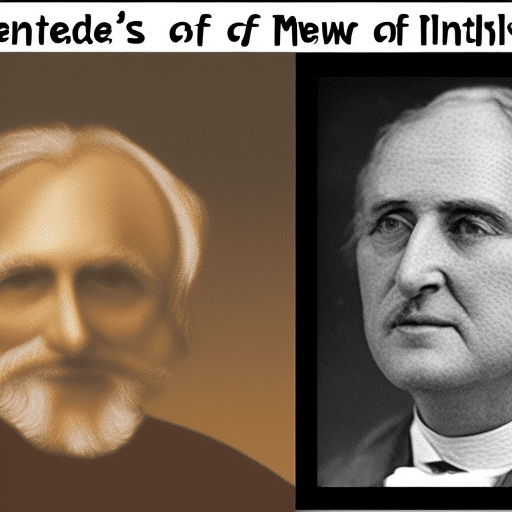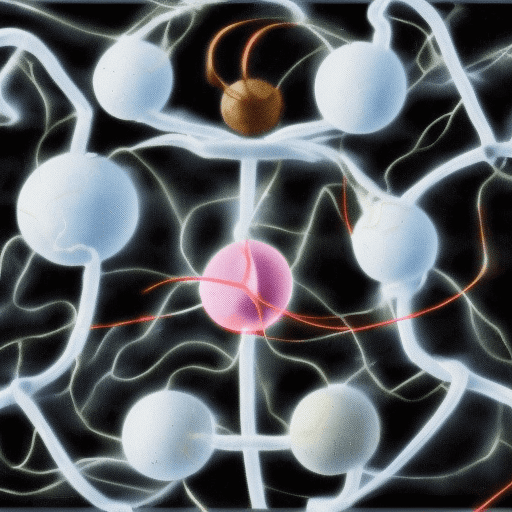In 1865, Gregor Mendel published the results of his experiments on plant hybridization in a paper called “Experiments with Plant Hybrids.”
In this paper, Mendel proposed and described what is now known as Mendel’s law of inheritance.
This law states that the genetic characteristics of an organism are determined by its genes, which are passed down from parents to their offspring.
In this blog post, we will discuss the history and implications of Mendel’s law of inheritance!

Gregor Mendel’s law of inheritance is the basic principle of genetics that states that the characteristics of a particular trait are determined by specific pairs of genes, which are passed down from parents to their offspring.
Explain it to a child
In the 1860s, Mendel did some experiments on pea plants. He was trying to find out how characteristics are passed down from one generation to the next. As a result of his experiments, Mendel developed the laws of inheritance. These laws explain how characteristics are inherited.
Each gene in a pair determines a specific trait, and the two genes in a pair may be the same (called alleles) or different. If both genes in a pair are the same, then the person will have two copies of that allele and will be said to be “homozygous” for that allele.
If the two genes are different, then the person will have one copy of each allele and will be said to be “heterozygous” for that allele.
What is Mendel’s law of inheritance and what does it mean for genetics?
Gregor Mendel is the father of modern genetics, and his work laid the foundation for our current understanding of how heredity works.

One of Mendel’s most important discoveries was what is now known as the law of inheritance.
This law states that there are two copies of each gene, one from each parent and that these genes can be dominant or recessive.
If a gene is dominant, it will be expressed in the phenotype even if the other copy is recessive.
However, if a gene is recessive, it will only be expressed if both copies are identical.
This discovery was pivotal in our understanding of how certain traits are passed down from generation to generation.
It also helped to explain why some traits seem to “skip” a generation.
For example, if a child inherits a recessive gene from one parent and a dominant gene from the other, the child will not express the recessive trait.
However, if that child has children with someone who also has a copy of the recessive gene, then there is a 25% chance that their child will inherit two copies of the recessive gene and express the trait.
In this way, Mendel’s law of inheritance is still shaping our understanding of genetics today.
What are the three basic principles of Mendel’s law of inheritance?

Mendel’s law of inheritance is one of the most important principles in genetics.
It states that there are three basic principles that govern the inheritance of traits: segregation, independent assortment, and dominance.
Segregation refers to the fact that each individual has two copies of each gene, one from each parent.
These copies are separated during gamete formation so that each gamete only contains one copy of each gene.
Independent assortment refers to the fact that different genes are inherited independently of each other.
That is, the inheritance of one gene does not affect the inheritance of another gene.
Dominance refers to the fact that some alleles are dominant over others.
That is, if an individual has one copy of a dominant allele and one copy of a recessive allele, the dominant allele will be expressed and the recessive allele will be hidden.
These three principles are responsible for the patterns of inheritance that we see in offspring.
How did Mendel come up with this law and what experiments did he perform to support it?
In the 1860s, Mendel conducted a series of experiments on pea plants that led him to develop the laws of inheritance.
These laws describe how characteristics are passed down from generation to generation.

Mendel’s work was largely ignored during his lifetime, but it was later rediscovered and became the foundation for the study of genetics.
In his experiments, Mendel cross-bred different varieties of pea plants and carefully tracked the traits of the resulting offspring.
He found that certain traits were always passed down in a predictable way.
For example, if a plant with yellow peas was crossed with a plant with green peas, all of the offspring would have yellow peas.
However, in the next generation, some of the offspring would have green peas.
From these observations, Mendel formulated his laws of inheritance.
Although his work was largely overlooked during his lifetime, Mendel’s discoveries laid the foundation for the science of genetics.
What are some of the implications of Mendel’s law of inheritance for humans and other organisms?
One of the most important implications of Mendel’s law of inheritance is that it helps to explain why some traits are more common than others.
For example, Mendel’s experiments with pea plants showed that the trait for tallness is dominant, while the trait for shortness is recessive.
This means that in any population, there will be more tall plants than short plants.
However, it also means that there is a chance for short plants to occur, as long as there is at least one parent plant with the recessive trait.
This same principle can be applied to other traits in humans and other organisms.
By understanding which traits are dominant and which are recessive, we can better understand why certain traits are more common than others.
Another implication of Mendel’s law of inheritance has to do with how traits are passed down from generation to generation.
Mendel’s experiments showed that each parent plant passes down one copy of each gene to its offspring.
This means that every offspring inherits two copies of every gene, one from each parent.
However, only one of these copies is expressed in the phenotype.
The other copy, known as the allele, is hidden in the genotype and may be passed down to future generations.
This explains why some traits may skip a generation or two before reappearing in a family tree.
It also helps to explain why some trait combinations, such as blue eyes and brown hair, are relatively rare in the population.
In summary, Mendel’s law of inheritance has implications for both the frequency of traits in a population and the way that they are passed down from generation to generation.
Together, these implications help us to better understand the complexities of inheritance.
How has Mendel’s law of inheritance been further developed over the years, and what impact has it had on modern genetics research?
One of Mendel’s most important insights was his law of inheritance, which states that each trait is controlled by a single gene.
This gene is passed down from parent to child, and it determines the characteristics of the offspring.
Over the years, Mendel’s law has been further developed and refined.
For example, we now know that genes can be mutated and that they can interact with each other in complex ways.
However, the basic principle remains the same: each trait is determined by a single gene.
The impact of Mendel’s law on modern genetics research has been profound.
By understanding how traits are inherited, scientists have been able to make tremendous progress in developing new techniques for treating genetic disorders.
In addition, Mendel’s law has also helped us to understand the evolution of species, as well as the development of new crops and lives
Are there any criticisms of Mendel’s law of inheritance, and if so, what are they?
There are some criticisms of Mendel’s work.
One common criticism is that his sample size was too small to be truly representative.
In addition, Mendel only worked with plants that were true-breeding, meaning that they always produced offspring with the same traits.
This made it impossible for him to observe any sort of variation.
Finally, some have argued that Mendel’s work was simply a confirmation of already-known facts about breeding and inheritance.
Despite these criticisms, however, Mendel’s work remains an important foundation of modern genetics.
What are some applications of Mendel’s law of inheritance in everyday life, such as in medicine or agriculture?
Mendel’s law of inheritance is one of the most important principles in genetics.
It states that each parent contributes one allele (gene) to their offspring for each trait.
This law is used in many different fields, such as medicine and agriculture.
In medicine, Mendel’s law is used to predict the likelihood of certain diseases being passed down from parents to children.
For example, if a parent has a disease that is caused by a recessive allele, there is a 25% chance that their child will inherit the disease.
In agriculture, Mendel’s law is used to produce plants with desired traits, such as resistance to pests or diseases.
For example, if two plants with different alleles for a certain trait are crossed, the offspring will inherit one allele from each parent.
By carefully selecting which plants to cross, farmers can produce crops with the desired traits.
Mendel’s law of inheritance is a fundamental principle that has many applications in real-world scenarios.
Today, Mendel’s law of inheritance is celebrated as one of the most important contributions to our understanding of heredity.
Article Sources
Jacks of Science sources the most authoritative, trustworthy, and highly recognized institutions for our article research. Learn more about our Editorial Teams process and diligence in verifying the accuracy of every article we publish.